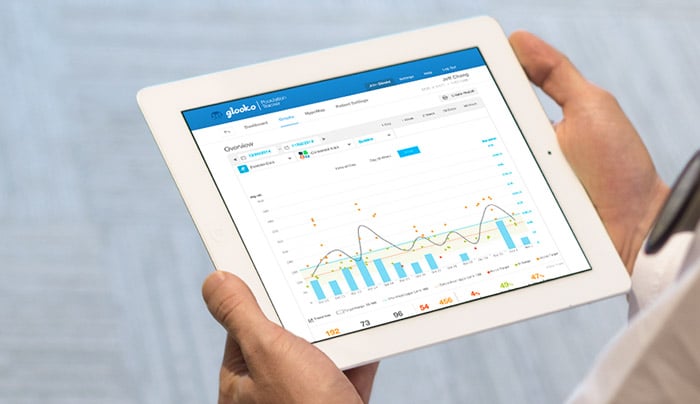Glooko is adding support for Insulin Pumps and Continuous Glucose Monitors (CGMs), and is demonstrating the capability at the American Diabetes Association’s 75th Scientific Sessions. The new feature adds on top of Glooko’s existing support for over 30 blood glucose meters, popular activity trackers, and biometric monitors for blood pressure and weight.
In addition, Glooko has also added new “Pump Day View” and “Pump Insights” features to its platform.“Utilizing Glooko’s remote monitoring functionality, ACOs and health systems can access risk-stratified patient data on-demand after a patient syncs his or her diabetes device to a smartphone,” said Rick Altinger, Glooko’s CEO. “With Glooko’s addition of Pumps and CGMs, care teams can better track and manage people who are starting or continuing intensive insulin therapy to improve their overall care which may ultimately improve their health outcomes.”
In addition, Glooko has also added new “Pump Day View” and “Pump Insights” features to its platform. While the latter allows seamless correlation amongst a patient’s basal and bolus insulin records, carb intake, exercise, and glucose readings from CGM or blood glucose meter; the latter view provides clarity on the impact of pump suspends, temporary basal events, and site changes on blood glucose levels. Combined, these two capabilities, enable ACOs, health systems, and people with diabetes to visualize data from their preferred combination of insulin pumps, CGMs, blood glucose meters, and fitness trackers in Glooko’s standardized diabetes data views.
According to The Diabetes Device Market Outlook to 2016 published by Business Insights, insulin pumps, which deliver rapid-acting insulin 24 hours a day through a catheter placed under the skin, are used by 33% of people with Type 1 diabetes, while CGMs, used to measure glucose levels in real-time, are expected to be used by up to 25% of people with Type 1 diabetes in 2016. The study indicates that the projected market valuation associated with these diabetes devices in 2016 is $2.9 billion and $763 million, respectively.


